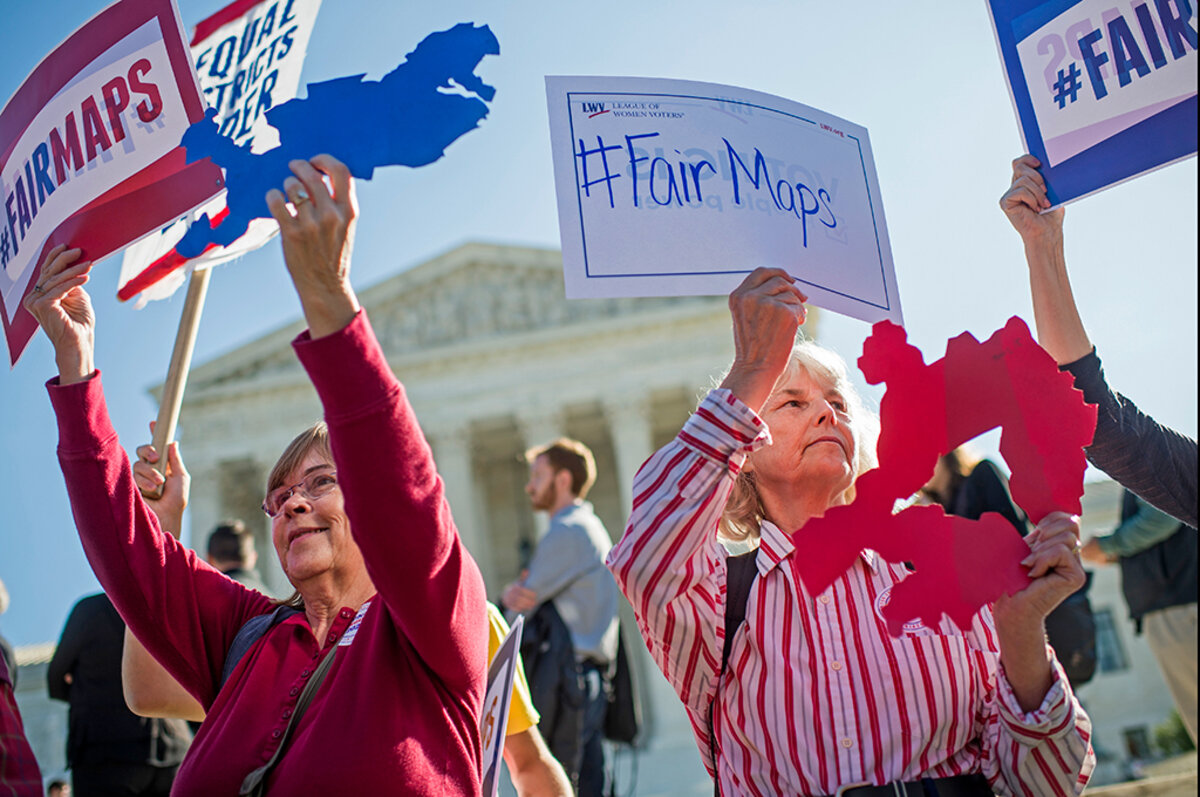Unlike with racial gerrymandering, the US Supreme Court has been reluctant to confront partisan gerrymandering in recent years. Not only is partisan gerrymandering perfectly legal to some degree – making it difficult to judge when it becomes unlawful – but the justices are also traditionally reluctant to get too involved in politics, particularly local politics.
“They really feel like they’re not well situated to decide whether the line should be drawn here or on the other side of [a town’s] park,” says Michael Li, a senior counsel at the Brennan Center for Justice at New York University Law School.
Every 10 years after a new Census is released, state legislatures redraw their voting district maps. The process is inherently political, with the majority party in the legislature controlling the process in 28 states (other states use independent commissions). In most states, redistricting has to meet specific criteria, including compactness, the preservation of counties and other political subdivisions, and the preservation of the cores of the old districts.
Today, however, the court heard arguments about whether that process can cross constitutional boundaries. The case, Gill v. Whitford, concerns the alleged partisan gerrymandering of state Assembly districts in Wisconsin.
With technological improvements making gerrymandering easier than ever, and a new Census on the horizon, critics of the practice say the court has to act now to place boundaries on it.
Since the case focuses on “extreme” partisan gerrymandering, locking in political majorities for multiple election cycles, it may be easier for the justices to avoid a sweeping opinion, some experts say. But perhaps more important, the technological advances that have enabled this kind of surgically precise remapping of voting districts – the same big data used by political campaigns to target likely voters – is only expected to get more advanced.
“There’s a real concern that if the court doesn’t step in, people both will have the tools to do it and have a signal from the court that [it won’t] stop them,” says Mr. Li. “They’ll know there’s no policeman on the block, and they’ll also have real robust tools to break into people’s houses.”
In the 2012 election, Republicans won 47 percent of the vote but 60 of 99 seats in the Wisconsin Assembly. Two years later, they won 57 percent of the vote and 63 seats in the Assembly. Two years after that their popular vote tally dropped to about 53 percent but they took 64 Assembly seats.
“That disconnect between what the state looks like, and state delegations,” says Li, “that’s what makes it an extreme gerrymander, because elections don’t matter; a majority is baked into the system.”
There are only about a half-dozen congressional maps and a dozen state legislative maps that fit that “extreme” profile, he adds. The issue also crosses party lines. While most of the states accused of partisan gerrymandering are Republican-controlled, states under Democratic control – Maryland, for example – are also judged to have engaged in the practice.
Some experts are also concerned that as the data collection and mathematical modeling technologies used to draw the districts improve, these kinds of gerrymanders could become easier to implement.
It’s this urgency that has seen politicians from both parties, including Sens. John McCain (R) of Arizona and Sheldon Whitehouse (D) of Rhode Island, urging the court to reach a decision "between district maps drawn based on legitimate political considerations and those constituting unlawful partisan gerrymandering."






